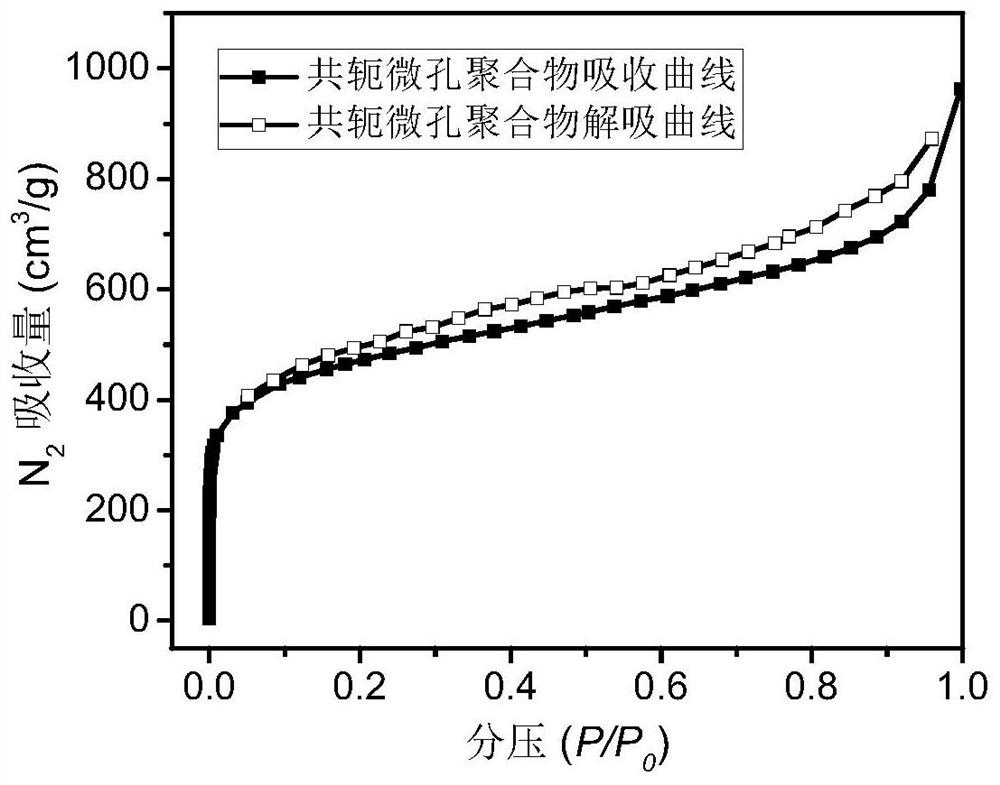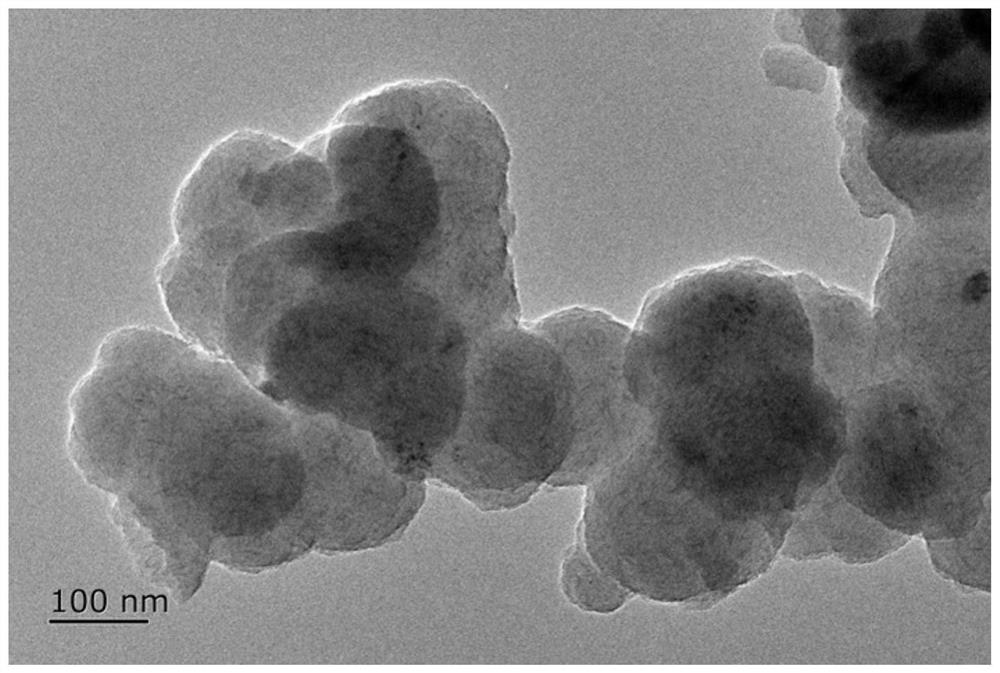Conductive conjugated microporous polymer and preparation method thereof
A conductive polymer, conjugated microporous technology, applied in electrical components, magnetic field/electric field shielding, etc., can solve problems such as difficulty in application
- Summary
- Abstract
- Description
- Claims
- Application Information
AI Technical Summary
Problems solved by technology
Method used
Image
Examples
Embodiment 1
[0034] A preparation method of a conductive conjugated microporous polymer sample 1 comprises the following steps;
[0035] Step 1, preparation of conjugated microporous polymer: bromoarene monomer 1,3,5-tris(4-bromophenyl)benzene (2 mmol), 1,4-phenyldiboronic acid (3 mmol mol), potassium carbonate (10 mmol), and tetrakis(triphenylphosphine) palladium (0.6 mmol%) were mixed and dissolved in 100 ml of dimethylformamide, and heated to 150° C. for 48 hours under argon protection. The resulting suspension was cooled to room temperature, poured into water, and the precipitate was collected by filtration, purified with a Soxhlet extractor using water, methanol, and tetrahydrofuran as solvents for 3 days, and dried in vacuo.
[0036] Step 2, disperse 100 mg of conjugated microporous polymer in 50 ml of dichloromethane solution containing pyrrole, wherein the mass ratio of conjugated microporous polymer to pyrrole is 1:1. Then, the solvent was removed by evaporation to obtain a pyrro...
Embodiment 2
[0038] A preparation method of a conductive conjugated microporous polymer sample 2 comprises the following steps;
[0039] Change the mass ratio of the conjugated microporous polymer and pyrrole in step 2 in Example 1 to 1:20, and change the mol ratio of pyrrole to ferric chloride to 1:1, and other implementation conditions are the same as in Example 1 to obtain sample 2 . After testing, the conductivity of sample 2 is 4.34 Siemens / cm, and its microstructure is as follows: image 3 shown.
Embodiment 3
[0041] A preparation method of a conductive conjugated microporous polymer sample 3 comprises the following steps;
[0042] Change the bromoarene monomer in step 1 in Example 1 to 1,2,4,5-tetrabromobenzene, the mass ratio of bromoarene monomer to pyrrole is 1:3, and other implementation conditions are the same as in Example 1. Sample 3 is obtained. After testing, the conductivity of sample 2 is 2.40 Siemens / cm, and its microstructure is as follows: Figure 4 shown.
PUM
| Property | Measurement | Unit |
|---|---|---|
| Porosity | aaaaa | aaaaa |
Abstract
Description
Claims
Application Information
 Login to View More
Login to View More - R&D
- Intellectual Property
- Life Sciences
- Materials
- Tech Scout
- Unparalleled Data Quality
- Higher Quality Content
- 60% Fewer Hallucinations
Browse by: Latest US Patents, China's latest patents, Technical Efficacy Thesaurus, Application Domain, Technology Topic, Popular Technical Reports.
© 2025 PatSnap. All rights reserved.Legal|Privacy policy|Modern Slavery Act Transparency Statement|Sitemap|About US| Contact US: help@patsnap.com



